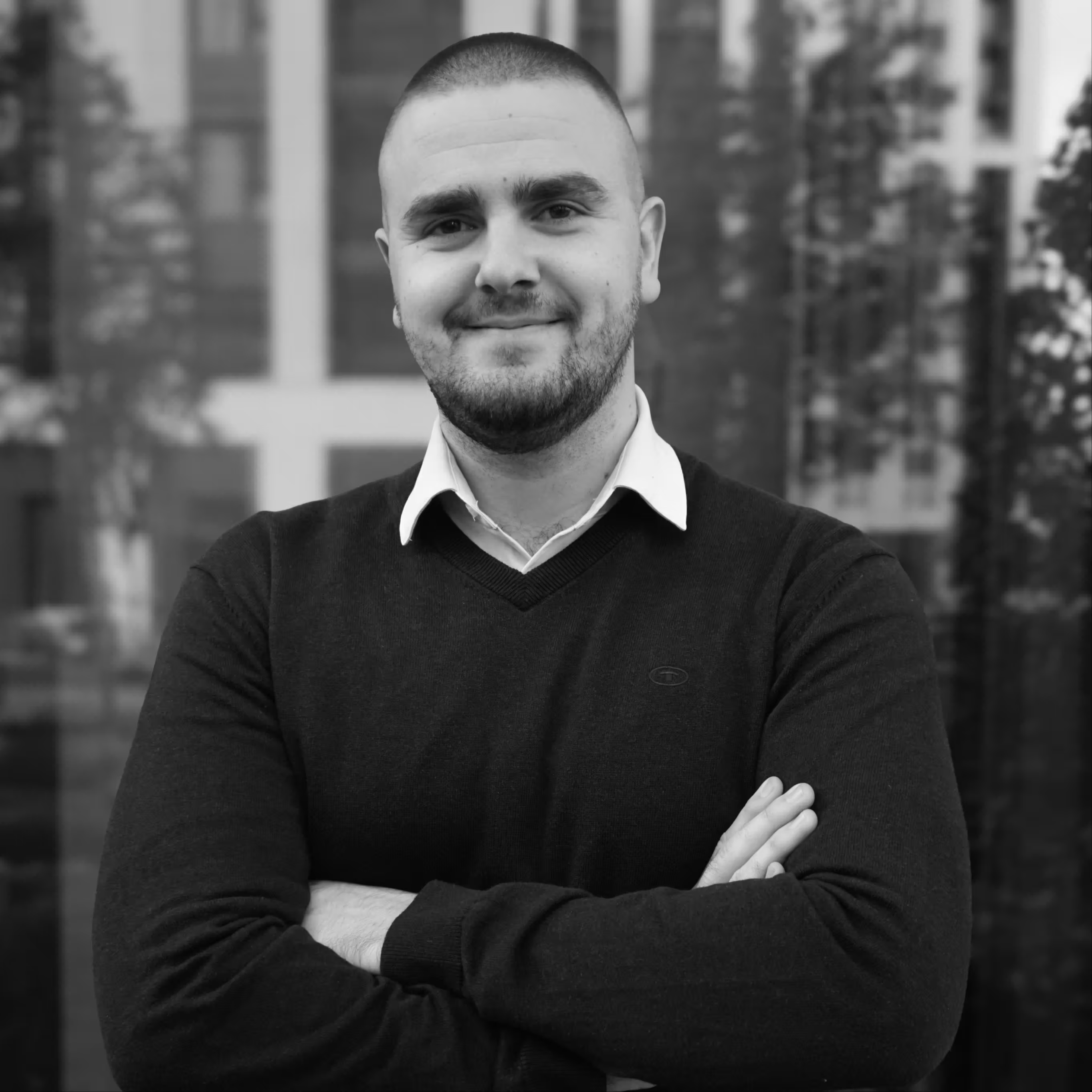By Mladen Terzic
Shopify Apps & Integrations
24th May 2025
7 min read
Shopify Order Sync: Best Practices
A concise guide to Shopify order syncing: use webhooks, schedule off-peak syncs, and handle API limits to keep your store running smoothly.

Want to sync Shopify orders effortlessly? Here's how:
- Use Webhooks for real-time updates during high-traffic events.
- Schedule Syncs during off-peak hours for bulk updates.
- Combine Both Methods for a balanced and reliable approach.
- Manage API Call Limits by splitting bulk updates and optimizing requests.
- Prepare for sales events by testing systems and scheduling updates early.
- Use tools like error handling and retries to maintain data accuracy.
Quick Comparison of Sync Methods:
| Sync Method | Best For | Key Benefit |
|---|---|---|
| Real-time Webhooks | Instant Updates | Fast order processing |
| Scheduled Syncs | Bulk Updates | Saves system resources |
| Combined Approach | High-volume Stores | Reliable and balanced |
Efficient order syncing ensures smooth operations, especially during busy sales periods. Follow these strategies to streamline your process and keep your store running seamlessly.
Handling Webhooks in Your Shopify App: HTTP + Amazon EventBridge

Challenges and Basics of Shopify API for Order Syncing
Managing Shopify's API effectively is key to ensuring smooth order synchronization. It allows data to flow between systems without delays or errors. The main hurdle? Staying within API call limits while keeping data accurate and up-to-date.
Understanding Shopify API Call Limits
API call limits play a big role in how efficiently your store syncs orders with external systems. Knowing these limits helps you fine-tune your sync processes.
Here’s a quick breakdown of how different operations affect API usage:
| Operation Type | Impact and Best Practice |
|---|---|
| Single Product Update | Low impact; ideal for real-time updates |
| Multi-variant Products | High impact; schedule updates during less busy times |
| Bulk Order Updates | Very high impact; split tasks into smaller batches |
For example, updating products with multiple variants can use up a lot of API resources [1].
Tips for Managing Bulk Data Updates
When dealing with bulk updates, there are a few ways to optimize the process. Simplify your CSV files by removing unnecessary columns, schedule updates during quieter hours, and consider using bulk edit apps to minimize API demands for major changes like pricing updates [1].
Here’s a closer look at some key components for syncing data:
| Sync Component | Purpose | Implementation Tip |
|---|---|---|
| Webhooks | Instant Updates | Use for critical changes that need real-time syncing |
| Batch Processing | Bulk Updates | Adjust API request speeds to avoid hitting limits |
| Error Handling | Data Integrity | Set up automatic retries for failed requests |
During busy periods, focus on essential updates to keep your system stable while ensuring important order data stays current. By managing API usage wisely, you can create a more reliable synchronization process tailored to your store's unique needs.
Steps for Effective Shopify Order Syncing
Keeping your Shopify orders in sync, especially during busy sales periods, requires careful planning and execution. Below, we’ll outline practical steps to ensure everything runs smoothly at every stage.
Preparing for High-Traffic Sales Events
Getting ready for major sales events is all about stabilizing your systems before the rush hits. Bulk updates should be completed early to avoid overloading Shopify's API.
Here’s how to get your store ready:
| Task | How to Do It |
|---|---|
| Product Data Updates | Schedule bulk uploads during quieter hours. |
| Inventory Sync | Use bulk edit tools for quick price updates. |
| System Testing | Double-check webhook connections and sync settings. |
Once these steps are done, your focus can shift to handling orders during the actual event.
Managing Order Processing During Sales
When sales are live, the challenge is processing orders efficiently while keeping the system stable. The trick is to prioritize tasks based on traffic levels.
Here are some tips for managing orders during sales:
| Time Period | What to Focus On |
|---|---|
| Peak Hours | Focus on accurate order fulfillment and webhook updates; pause non-critical tasks. |
| Off-Peak Hours | Process pending orders and schedule routine syncs. |
| Error Handling | Use Shopify Admin or monitoring tools to track issues; set up alerts for quick fixes. |
sbb-itb-6dc743d
Advanced Methods for Shopify Order Syncing
Syncing Shopify orders effectively requires precise techniques to maintain data accuracy and streamline processes. Here’s a closer look at how to refine your order synchronization strategy.
Using Webhooks for Instant Updates
Webhooks enable real-time communication between Shopify and external systems by sending notifications about order events as they happen. This eliminates the need for constant API polling, saving resources and ensuring timely updates.
Key webhook configurations:
| Event Type | Implementation Strategy |
|---|---|
| Order Creation | Notify systems of new orders; set up redundant endpoints for reliability |
| Order Updates | Include retry mechanisms to handle failed notifications |
| Order Cancellation | Automate stock adjustments with error handling |
While webhooks handle immediate updates, they work best when paired with scheduled syncs to ensure long-term data consistency.
Setting Up Cronjobs for Scheduled Syncs
Cronjobs are ideal for running scheduled updates, ensuring your order data stays accurate over time. They complement webhooks by performing systematic checks and updates.
Recommended sync intervals:
| Sync Type | Frequency | API Usage |
|---|---|---|
| Full Order History | Daily (off-peak) | High - Best scheduled during low-traffic periods |
| Recent Orders (48h) | Every 4 hours | Medium - Spread tasks across stores |
| Error Resolution | Every 30 minutes | Low - Focused on addressing failed syncs |
Combining Webhooks and Scheduled Syncs
Integrating webhooks with scheduled syncs creates a balanced system. Webhooks provide real-time responsiveness, while scheduled syncs ensure comprehensive updates. This dual approach is especially useful for managing API limits during busy periods.
Technical setup considerations:
| Component | Configuration | Purpose |
|---|---|---|
| Webhook Endpoints | Use load-balanced servers | Handle sudden spikes in traffic |
| Cronjob Scheduling | Adjust based on API limits | Maximize resource efficiency |
| Error Handling | Implement automated retries | Prevent missed orders |
How Codersy Supports Shopify Order Syncing

Codersy offers tailored Shopify order syncing solutions, combining technical know-how with practical strategies. Their team designs systems that address complex syncing challenges effectively.
Codersy's Shopify Development Services
Codersy creates order syncing solutions specifically designed for each Shopify store. They use methods like webhooks and scheduled sync protocols to ensure smooth operations. Here's a closer look at their focus areas:
| Service Area | Implementation Focus | Business Impact |
|---|---|---|
| API Integration | Custom middleware for efficient data handling | Fewer sync errors and faster processing times |
| Headless Architecture | Decoupled frontend and backend systems | Better performance during busy periods |
| Custom App Development | Sync tools with advanced webhook configurations | Simplified order management processes |
Why Work with Codersy
Codersy doesn't just stick to basic integrations – they aim to elevate order synchronization with tailored enhancements:
| Improvement Focus | Technical Advantage |
|---|---|
| Performance Optimization | Smarter API usage and fewer data inconsistencies |
| Custom Development | Scalable solutions for intricate order needs |
| Integration Management | Smooth operation across multiple system connections |
These solutions are particularly helpful for Shopify stores that:
- Handle large transaction volumes and need precise API management
- Rely on multiple systems that require synchronized data flow
- Have complex order workflows needing specialized tools
Summary and Final Thoughts
Codersy's approach highlights how Shopify order syncing requires both technical precision and practical execution. This combination becomes especially important during busy periods when smooth data flow is critical for business operations.
Key Takeaways
Successful order syncing starts with understanding Shopify API limits and working within them. Mismanaging these limits can disrupt syncing and impact business performance. Here's what merchants focus on:
| Focus Area | Implementation Strategy | Business Impact |
|---|---|---|
| API & Data Handling | Schedule bulk updates during off-peak hours; combine webhooks with scheduled syncs | Keeps syncs running smoothly and ensures timely updates |
| System Integration | Use middleware for handling complex workflows | Minimizes errors and reduces delays in processing |
Combining webhooks with scheduled syncs strikes a balance between real-time updates and accurate data management. This setup ensures stable operations during high-traffic periods without overloading resources.
Expert guidance can make a big difference for advanced setups. For instance, Codersy offers tailored solutions that turn syncing challenges into efficient workflows. Their expertise helps businesses improve reliability and scale their operations effectively.
Order syncing isn't just about the technical side – it's about building a strong, scalable system that can handle growth and peak sales periods while keeping data accurate and systems running smoothly. With these strategies, businesses are better equipped to manage syncing challenges and focus on growing their eCommerce ventures.



